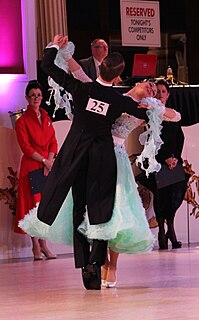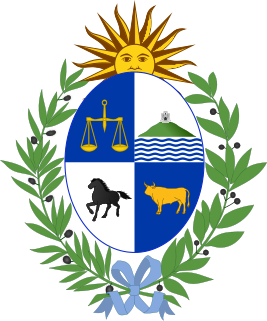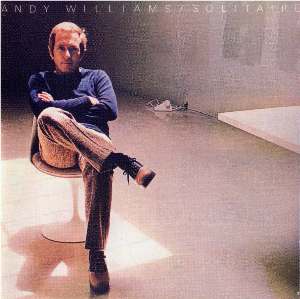
Ballroom dance is a set of partner dances, which are enjoyed both socially and competitively around the world, mostly because of its performance and entertainment aspects. Ballroom dancing is also widely enjoyed on stage, film, and television.
The music of Latin America refers to music originating from Latin America, namely the Romance-speaking regions of the Americas. Latin American music also incorporates African music from enslaved African people who were transported from West and Central Africa to the Americas by European settlers, as well as music from the Indigenous peoples of the Americas. Due to its highly syncretic nature, Latin American music encompasses a wide variety of styles, including influential genres such as cumbia, bachata, bossa nova, merengue, rumba, salsa, samba, son, and tango. During the 20th century, many styles were influenced by the music of the United States giving rise to genres such as Latin pop, rock, jazz, hip hop, and reggaeton.
Juan María Solare is an Argentine composer and pianist.

The most distinctive music of Uruguay is to be found in the tango and candombe; both genres have been recognized by UNESCO as an Intangible Cultural Heritage of Humanity. Uruguayan music includes a number of local musical forms such as murga, a form of musical theatre, and milonga, a folk guitar and song form deriving from Spanish and italian traditions and related to similar forms found in many American countries.

The music of Argentina includes a variety of traditional, classical and popular genres. One of the country's most significant cultural contributions is the tango, which originated in Buenos Aires and its surroundings during the end of the 19th century and underwent profound changes throughout the 20th century. Folk music was particularly popular during the 20th century, experiencing a "boom" in popularity during the 1950s and 1960s thanks to artists such as Atahualpa Yupanqui and Mercedes Sosa, prominent figures of the Nuevo cancionero movement. In the mid-to-late 1960s, the countercultural scene of Buenos Aires originated Argentine rock, considered the earliest incarnation of Spanish-language rock for having an autochthonous identity that differed from that of England or the United States. It was widely embraced by the youth and since then has become part of the country's musical identity as much as traditional music. According to the Harvard Dictionary of Music, Argentina also "has one of the richest art music traditions and perhaps the most active contemporary musical life.

Tango is a partner dance and social dance that originated in the 1880s along the Río de la Plata, the natural border between Argentina and Uruguay. The tango was born in the impoverished port areas of these countries as the result of a combination of Rioplatense Candombe celebrations, Spanish-Cuban Habanera, and Argentine Milonga. The tango was frequently practiced in the brothels and bars of ports, where business owners employed bands to entertain their patrons. The tango then spread to the rest of the world. Many variations of this dance currently exist around the world.

Tango is a style of music in 2
4 or 4
4 time that originated among European and African immigrant populations of Argentina and Uruguay. It is traditionally played on a solo guitar, guitar duo, or an ensemble, known as the orquesta típica, which includes at least two violins, flute, piano, double bass, and at least two bandoneóns. Sometimes guitars and a clarinet join the ensemble. Tango may be purely instrumental or may include a vocalist. Tango music and dance have become popular throughout the world.

Dance notation is the symbolic representation of human dance movement and form, using methods such as graphic symbols and figures, path mapping, numerical systems, and letter and word notations. Several dance notation systems have been invented, many of which are designed to document specific types of dance while others have been developed with capturing the broader spectrum of human movement potential. A dance score is a recorded dance notation that describes a particular dance.
Nuevo tango is either a form of music in which new elements are incorporated into traditional tango music, or an evolution of tango dance that began to develop in the 1980s.

Argentine tango is a musical genre and accompanying social dance originating at the end of the 19th century in the suburbs of Buenos Aires. It typically has a 2
4 or 4
4 rhythmic time signature, and two or three parts repeating in patterns such as ABAB or ABCAC. Its lyrics are marked by nostalgia, sadness, and laments for lost love. The typical orchestra has several melodic instruments and is given a distinctive air by the bandoneon. It has continued to grow in popularity and spread internationally, adding modern elements without replacing the older ones. Among its leading figures are the singer and songwriter Carlos Gardel and composers/performers Francisco Canaro, Juan D'Arienzo, Carlos Di Sarli, Osvaldo Pugliese, and Ástor Piazzolla.

Tanghetto is an Argentinian neo tango and electronic tango music project created and led by musician and producer Max Masri. Winner of the Gardel Award and four times nominated to the Latin Grammy Awards. It's based in Buenos Aires, Argentina.

Acoustic music is music that solely or primarily uses instruments that produce sound through acoustic means, as opposed to electric or electronic means. While all music was once acoustic, the retronym "acoustic music" appeared after the advent of electric instruments, such as the electric guitar, electric violin, electric organ and synthesizer. Acoustic string instrumentations had long been a subset of popular music, particularly in folk. It stood in contrast to various other types of music in various eras, including big band music in the pre-rock era, and electric music in the rock era.
The Jazz Mandolin Project was an acoustic jazz fusion group formed in Burlington, Vermont, by Jamie Masefield in 1993.

Uruguayan tango is a rhythm that has its roots in the poor areas of Montevideo around 1880. Then it was extended to other areas and countries. As Borges said: "...tango is African-Montevidean [Uruguayan], tango has black curls in its roots..." He quoted Rossi, that sustained that "...tango, that argentine people call argentine tango, is the son of the Montevidean milonga and the grandson of the habanera. It was born in the San Felipe Academy [Montevideo], a Montevidean warehouse used for public dances, among gangsters and black people; then it emigrated to underworld areas of Buenos Aires and fooled around in Palermo's rooms..." This also implies that different forms of dance were originated in the neighborhoods of Montevideo, Uruguay in the last part of the 19th century and in the early 20th century that was particular from that area and different from Buenos Aires. It consists of a variety of styles that developed in different regions of Argentina and Uruguay.
Vox Novus is a New York City-based organization consisting of composers, musicians, and music enthusiasts which presents and supports new music. Vox Novus was founded by Robert Voisey to promote contemporary composers in 2000.
This organization was created for the purposes of expanding the presence of contemporary music in the public's vision, empowering composers and contemporary musicians to create, produce, and promote their music. Vox Novus does this by the production of concerts, exposure on the Internet, and facilitating networking between professionals. Vox Novus promotes and produces contemporary music using repeatable methods and models that composers can take and use on their own. This way contemporary music can reach an ever wider audience thereby continuing the advancement of culture and art.

Bajofondo is a Río de la Plata-based music band consisting of eight musicians from Argentina and Uruguay, which aims to create a more contemporary version of tango and other musical styles of the Río de la Plata region. It was founded in the early 2000s as a studio experiment, which culminated into the successful album Bajofondo Tango Club. This led to touring and eventually to the current lineup. Bajofondo calls itself a collaborative as all members have solo careers as well. The group has toured around the world, particularly in Latin America, the United States, Europe and parts of Asia. Their music is known to a wider audience than those who know their name as their music has been used in film and television.

"Everywhere" is a song by British-American rock band Fleetwood Mac from their fourteenth studio album, Tango in the Night (1987). The song was written by Christine McVie, who also performed lead vocals, and produced by Lindsey Buckingham and Richard Dashut. In the United States, "Everywhere" was released as the fourth single from Tango in the Night in November 1987, while in the United Kingdom, it was issued as the album's fifth single on 21 March 1988.

Libertango is a composition by tango composer and bandoneon player Astor Piazzolla, recorded and published in 1974 in Milan. The title is a portmanteau merging "Libertad" and "tango", symbolizing Piazzolla's break from classical tango to tango nuevo.

Solitaire is the thirty-first studio album by American pop singer Andy Williams, released in the fall of 1973 by Columbia Records and was an attempt to move away from his formulaic series of recent releases that relied heavily on songs that other artists had made popular.
David Chesky is an American pianist, composer, producer, arranger, and co-founder of the independent, audiophile label Chesky Records. He is also co-founder and CEO of HDtracks, an online music store that sells high-resolution digital music.












